Neel Trivedi
PSUMNet: Unified Modality Part Streams are All You Need for Efficient Pose-based Action Recognition
Aug 11, 2022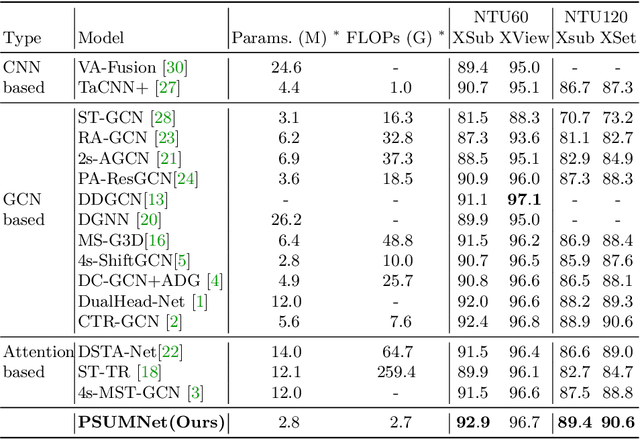
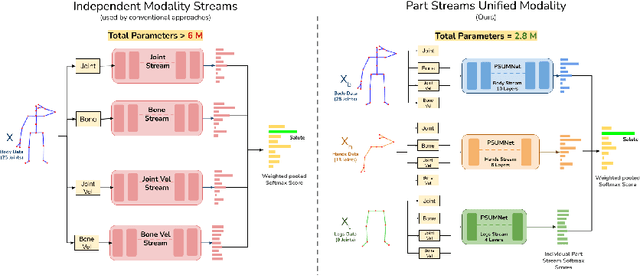
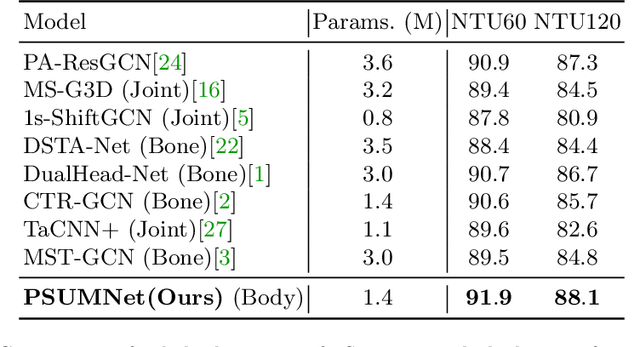
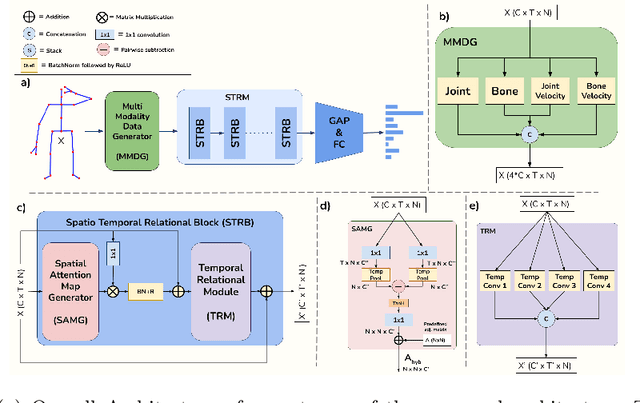
Abstract:Pose-based action recognition is predominantly tackled by approaches which treat the input skeleton in a monolithic fashion, i.e. joints in the pose tree are processed as a whole. However, such approaches ignore the fact that action categories are often characterized by localized action dynamics involving only small subsets of part joint groups involving hands (e.g. `Thumbs up') or legs (e.g. `Kicking'). Although part-grouping based approaches exist, each part group is not considered within the global pose frame, causing such methods to fall short. Further, conventional approaches employ independent modality streams (e.g. joint, bone, joint velocity, bone velocity) and train their network multiple times on these streams, which massively increases the number of training parameters. To address these issues, we introduce PSUMNet, a novel approach for scalable and efficient pose-based action recognition. At the representation level, we propose a global frame based part stream approach as opposed to conventional modality based streams. Within each part stream, the associated data from multiple modalities is unified and consumed by the processing pipeline. Experimentally, PSUMNet achieves state of the art performance on the widely used NTURGB+D 60/120 dataset and dense joint skeleton dataset NTU 60-X/120-X. PSUMNet is highly efficient and outperforms competing methods which use 100%-400% more parameters. PSUMNet also generalizes to the SHREC hand gesture dataset with competitive performance. Overall, PSUMNet's scalability, performance and efficiency makes it an attractive choice for action recognition and for deployment on compute-restricted embedded and edge devices. Code and pretrained models can be accessed at https://github.com/skelemoa/psumnet
NTU60-X: Towards Skeleton-based Recognition of Subtle Human Actions
Jan 29, 2021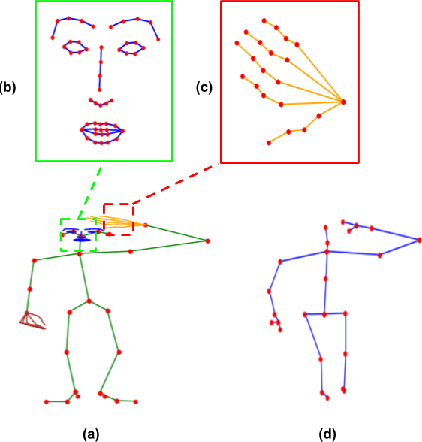

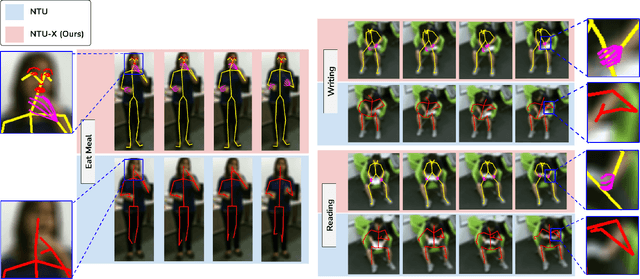
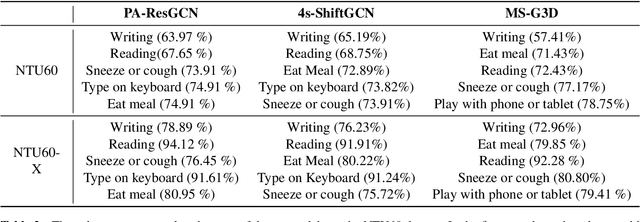
Abstract:The lack of fine-grained joints such as hand fingers is a fundamental performance bottleneck for state of the art skeleton action recognition models trained on the largest action recognition dataset, NTU-RGBD. To address this bottleneck, we introduce a new skeleton based human action dataset - NTU60-X. In addition to the 25 body joints for each skeleton as in NTU-RGBD, NTU60-X dataset includes finger and facial joints, enabling a richer skeleton representation. We appropriately modify the state of the art approaches to enable training using the introduced dataset. Our results demonstrate the effectiveness of NTU60-X in overcoming the aforementioned bottleneck and improve state of the art performance, overall and on hitherto worst performing action categories.
Quo Vadis, Skeleton Action Recognition ?
Jul 04, 2020
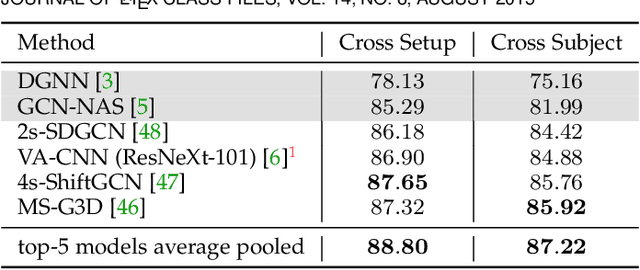

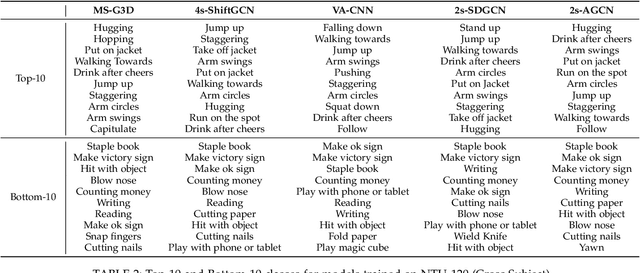
Abstract:In this paper, we study current and upcoming frontiers across the landscape of skeleton-based human action recognition. To begin with, we benchmark state-of-the-art models on the NTU-120 dataset and provide multi-layered assessment of the results. To examine skeleton action recognition 'in the wild', we introduce Skeletics-152, a curated and 3-D pose-annotated subset of RGB videos sourced from Kinetics-700, a large-scale action dataset. The results from benchmarking the top performers of NTU-120 on Skeletics-152 reveal the challenges and domain gap induced by actions 'in the wild'. We extend our study to include out-of-context actions by introducing Skeleton-Mimetics, a dataset derived from the recently introduced Mimetics dataset. Finally, as a new frontier for action recognition, we introduce Metaphorics, a dataset with caption-style annotated YouTube videos of the popular social game Dumb Charades and interpretative dance performances. Overall, our work characterizes the strengths and limitations of existing approaches and datasets. It also provides an assessment of top-performing approaches across a spectrum of activity settings and via the introduced datasets, proposes new frontiers for human action recognition.
 Add to Chrome
Add to Chrome Add to Firefox
Add to Firefox Add to Edge
Add to Edge